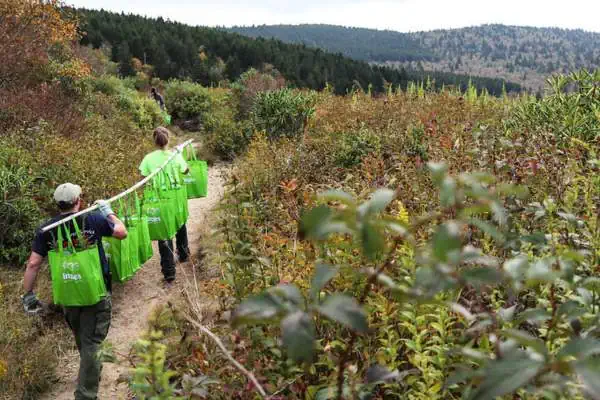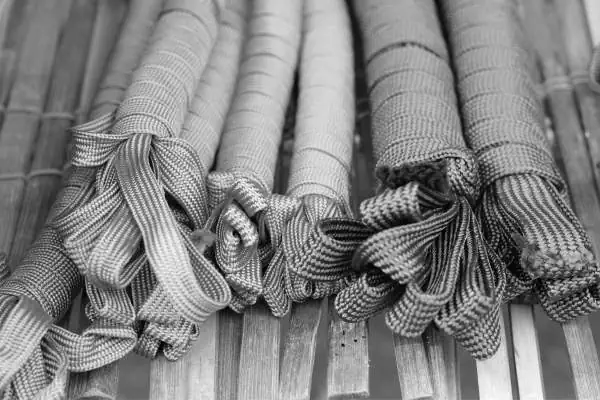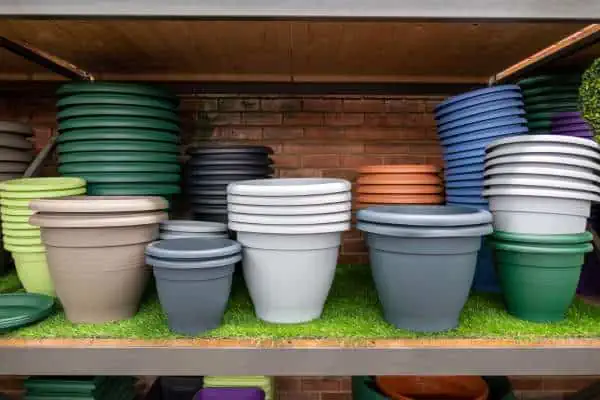There are various reasons one might want to know how to move their large, potted trees. One of the most common reasons for maintaining trees in pots by regularly moving them is to protect them from cold climates that are unsuitable for their growth.
Several tree species are not cold-tolerant and would require indoor relocation if potted in areas with sufficiently low temperatures. For instance, tropical plants such as avocado, citrus, and banana trees may be susceptible to frost damage in cold climates.
Figs and olive trees also have limited cold tolerance and would likely require protection from the cold if grown in areas with frosty winters. Additionally, some species of palm trees, such as the pygmy date palm and lady palm, are more suited to warmer climates and could benefit from being moved indoors in colder regions.
In this article, we’ll discuss some helpful tips and techniques for how to move potted trees, so you can enjoy the benefits of having a beautiful and healthy tree in any location you desire.
How to Move Large Potted Trees
Planting your tree in a pot lets you move it inside or outside depending on the weather. When it’s warm, you can move it outside to bask in the sun. If a cold snap happens, don’t worry – it can be brought inside to stay cozy.
There’s one big challenge that comes with growing a potted tree: the bigger the tree gets, the harder it is to move. It’s easy enough to move a small tabletop bonsai or even a dwarf lemon tree. Add a few years and regular watering and you have yourself a challenge.
Heavy ceramic pots, high-quality soil, and new growth can complicate the simplest of moves.
1. Enlist the help of a friend

A tree is notoriously difficult to carry, even what looks like a small one. They are bottom-heavy, thanks to the root ball, as well as delicate up top. You don’t want to injure the tree by breaking branches or letting it tip over because you’re not strong enough to carry it on your own.
With a friend, you can evenly support both sides of the planter and work together to move it where it needs to go. This is one of the easiest and least-expensive ways to move large potted trees.
2. Don’t fill the pot up all the way with soil
Before trying this method of keeping your tree movable, double check that the tree can handle having a smaller space for its roots to grow into. Some trees require as much soil and space as possible to grow. Others actually enjoy being boxed in by pots and planters.
Once your plant’s growing preferences are clear, remove it from the planter. You can use a new container or the same one. Instead of filling an empty container 100% with soil, add in light, space-saving materials. Styrofoam, packing peanuts, and empty coke cans are all great options.
Soil goes on top of the landscaping fabric. Added benefits are that the pot will drain better and reduce its weight so it’s easier to carry inside and outside.
3. Use a hand truck
Hand trucks, sometimes called dollies or two-wheelers, are convenient when loading and unloading boxes. They work likewise when loading and unloading plants. A hand truck like this is especially helpful because it takes just one person, keeps the tree upright, and doesn’t require lots of strength to use.
They’re versatile so you can use them for other tasks around the garden too. Hand trucks come in many shapes and sizes. They can hold anywhere from 20 to 450 pounds, which covers many sizes and shapes of plants.
Some even fold to save space, a helpful trait if you have a compact backyard or small garden shed.
4. Keep it close to a door
The shorter the distance you have to move your tree, the better. Potential solutions to reduce the amount of work transferring your indoor tree include keeping it close to a sliding glass door to the outside.
In the warm months, the plant can get sun and fresh air right outside the sliding glass door on your patio or deck. It’s easy to bring it inside when the weather turns sour since the tree only has to be moved a few feet.
Whether this method works for you depends on the layout of your house, townhome, or apartment. It may be convenient for some, but not for all. Try out different places you can put your potted tree; you may find a solution that reduces the distance you have to carry your plant!
5. Use carpet or felt gliders
You’ve probably seen professional movers use gliders to transport furniture over carpeted, tile, or hardwood floors. These gliders can also be used to transport heavy pots and planters. Select the kind of glider you need according to your floor type.
Carpeted floors require smooth plastic gliders. Hardwood, vinyl, and tile floors necessitate felt or microfiber gliders. Tilt the tree to the side to slide the gliders underneath.
Once you have enough gliders situated in an equal distance around the planter, you can grip the planter by the base and slide it across the floor. Take care to only slide the planter from the base. Leaning against the tree’s branches or trunk may not provide enough force to move the tree.
Instead, it might dislocate the plant’s position in the soil. Remember to be careful when moving your plant over any bumps or ridges in the floor. Seams between doors and flooring types can be easy to forget about.
6. Use straps

Movers also use heavy duty polyester straps to move large furniture. Depending on the size of your potted tree, straps may be a good fit for your moving needs. Tree planters that are longer than they are tall are great candidates for straps.
This method of moving requires two people to balance the weight of the tree. A long strap about 2.5” inches wide is looped underneath each side of the planter. Each end of the strap has a loop, through which the movers place their forearms.
This takes the weight off of the movers’ backs and divides it across their shoulders and legs.
7. Change the tree’s planter

You’ll often see planters cast from cement molds or carved out of stone. They may be beautiful, but they’re extremely heavy and notoriously difficult to move. Keeping a potted tree in such a heavy pot makes it difficult to move.
Thanks to modern science, there are plenty of alternatives to cement and stone that are light. They even have the added benefit of being more inexpensive. Plastic planters are a prime example of a cost-effective and efficient pot to keep your indoor tree in.
Another benefit of keeping your indoor tree in a plastic planter is that the plastic does not absorb water. Cement often absorbs water. This can be a problem since it may leach outside the pot and into floors and carpets, causing staining.
